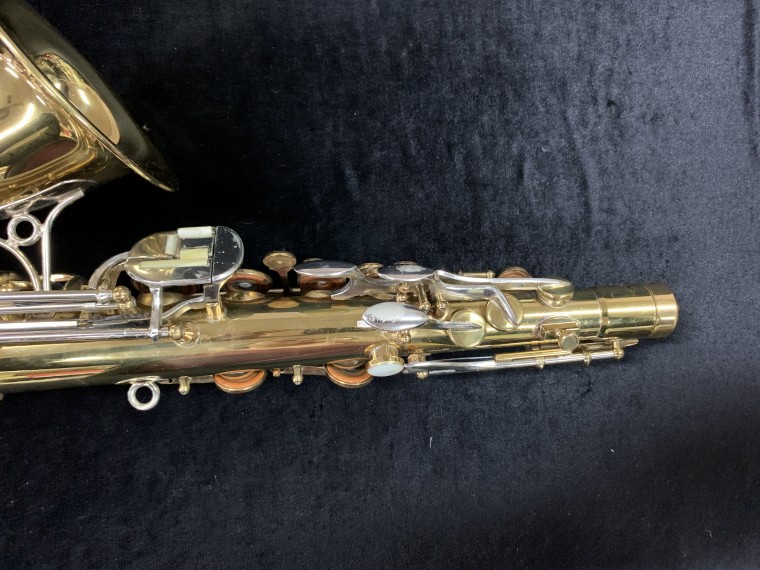

The Martin handcraft tenors feature a formidable keel on the bottom of the bow the Super-Fine does not appear to have such a keel.

The 1921-era Martin tenors had a G# trill key the “Super-Fine” does not. 1921-era Martin tenors have a Conn-style chromatic F# key with the opening above the thumb rest the “Super-Fine” has a teeter-totter (spatula) F# key found in later Martin (and Buescher) models. However Martin horns in 1921 had several differences compared to the “Super-Fine” horn: 1921-era Martin tenors had pillar stops for the palm keys the “Super-Fine” does not. It has a hand engraved serial number of 22160, which would date it around 1921. Then I noticed a few interesting details about the Super-Fine I hadn’t noticed before: (An old e-Bay add has even more pictures). It was so pretty I recently searched online to see if the pictures were still posted–and here they are. I saw this Martin “Super-Fine” tenor on e-Bay in 2013. Here are the rest of the photos of this aptly named, Super-Fine Martin Handcraft tenor saxophone in gold plate… Absolute satisfaction is guaranteed with this one, it’s a great tenor. Cosmetic condition is rated as Excellent+, with some minor nicks and signs of handling. The end result is a horn that is so finely adjusted, that it rings like a bell when you snap the pads closed. The horn now sports modern firm pads, traditional flat resonators, and other effective materials like wool felt, natural cork, and modern composite cork where needed. Al has carefully overhauled this instrument, giving it a thorough dynamic play test (or three), and making all of the fine adjustments it deserves. I would argue that Al McLean is the best sax tech that there is, with all due respect to the other members of the creme-de-la-creme repair club. They very much had this one right, the horn is astounding, both aesthetically, ergonomically, and sonically.

Gold Plate, Original Factory Custom Engraving – Ornate!Ī highly ornate, completely unique Martin Handcraft sax, this example dates to the very beginning of Martin Handcraft’s manufacturing. This is how Cole describes this beautiful Martin tenor saxophone:ġ921 Martin Handcraft ‘Super-Fine’ Gold Tenor Saxophone Cole is from Montreal, and he employs the services of premier repair tech Al McLean, to ensure that the vintage horns he sells are restored to back to better-than-original condition. This absolutely stunning horn is being sold by one of my favourite vintage horn dealers, Randy Cole. The serial number places its production circa 1921.įurthermore, it It has the characteristic straight tone holes of a Phase 1 horn. Regardless, the Super-Fine tenor currently up for auction is undoubtedly a Handcraft. Interestingly enough, Edwin makes no mention of a Super-Fine version of the Handcraft. Speaking of the The Martin Story, Edwin Van Druten has done a wonderful job writing about these fantastic vintage horns, and cataloguing hundreds of images of the various models that this American saxophone manufacturer produced. I must admit this key has me rather stumped. Some Phase 2 Handcraft owners, like myself, have had their techs add a front F from other horns, but I’ve never seen one added into the hinge tube mechanism like this one is.įurthermore, pouring through all the various Martin models pictured on The Martin Story, I didn’t find another front F key that looked like it. Now we know that the Phase 2 horns didn’t have a front F key, and that Martin added it on the Phase 3 horns. According to the serial number, this ornately engraved Martin is from Phase 1 of the Handcraft production, but what’s interesting is that horn is engraved Super-Fine, and doesn’t seem to have the name Handcraft anywhere.Īnother interesting feature on this horn, is its front F key. This morning I saw an absolutely stunning, gold-plated Martin tenor saxophone on eBay.


 0 kommentar(er)
0 kommentar(er)
